Taj Mahal, Agra, India: An Ode to the Ultimate Temple of Love in Dense Morning Smog of South Asia
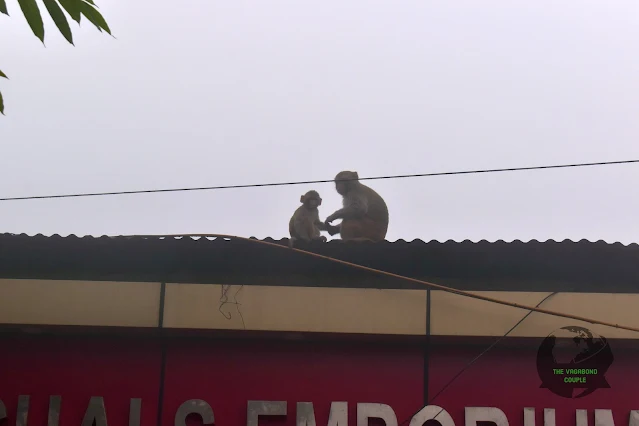 |
| Monkeys at east gate of Taj Mahal |
After spending christmas day exploring Kolkata, we take a Vistara flight to Delhi and hop into a minivan to drive the world-class 6-lane 165.5 KM long Yamuna Expressway toll road to Agra. We visit the Taj Mahal early next morning in the dense winter smog of southern Asia before continuing our journey to Jodhpur, Rajasthan.
Highway food at the dhabas (roadside diners, usually a truck stops) of India have always been outstanding. Delicious meals are cooked and served steaming hot direct from an open kitchen on the premises. Ingredients for simple but remarkably tasty menu items are often collected from farms around and are as organic and fresh as they can be. On our way from Delhi to Agra on the Yamuna Expressway, we stop at Shiva Dhaba for a sumptuous lunch. The economical dhaba food experience is among the things that makes India incredible. Ask anyone about the quality and taste of sarson ka saag and makki ki roti at an Indian dhaba, let alone mutton curry if available!
 |
| Shiva Dhaba, Yamuna Expressway (Delhi to Agra) |
It is evening by the time we reach Agra and check into Hotel Clarks Shiraz. The winter months in northern India, particularly across the Indo-Gangetic Plain, are often shrouded in a thick, hazardous blanket of smog. This phenomenon, a complex interplay of geographical and human factors, poses a significant threat to public health and the environment. The christmas decorations of the gardens of the hotel look distinctly eerie in the thick haze.
 |
| Entrance doors of the hotel |
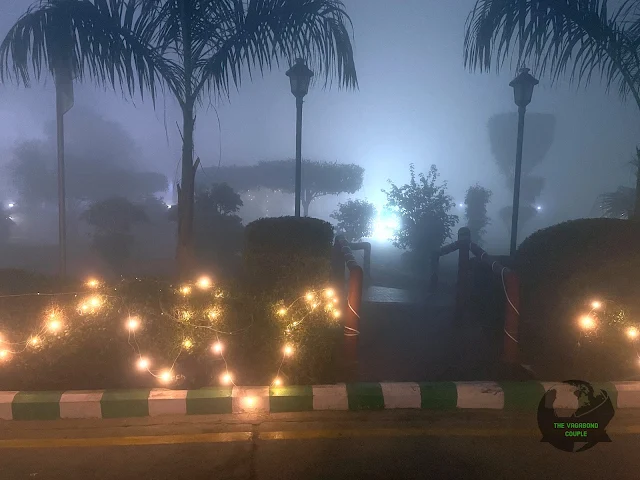 |
| Gardens of the hotel |
We had picked the Clarks Shiraz over the slew of modern brand-name hotels in Agra because of its five decades of heritage and long list of global personalities who have been their guests.
 |
| Famous guests of Hotel Clarks Shiraz |
Our rooms included a buffet dinner which we take advantage of before hitting comfortable beds in luxurious rooms for a rejuvenating night's sleep.
We head down to breakfast, also included with our rooms, early next morning to find an elaborate affair including fantastic made-to-order Indian masala omelets. Recharged by awesome food and caffeine, we drive the 3 kilometers to the Taj Mahal parking lot. We are told the smog usually clears up by noon, but we will be long gone by then. It appears we will have to experience the Taj in a new translucent environment in this visit.
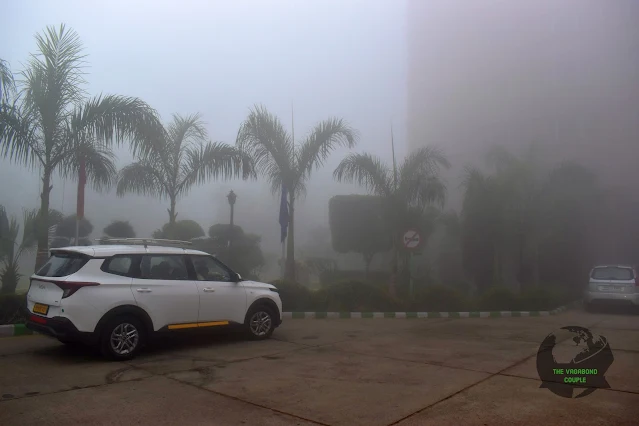 |
| Driveway of the hotel |
The Taj Mahal, a celestial dream carved from ivory-white marble, whispers a love story etched in eternity. Built by Mughal emperor Shah Jahan in 1632, it wasn't just a mausoleum for his beloved Mumtaz Mahal, but a monument to a love that transcended death. It is truly unfortunate that Mumtaz Mahal never got to see what Shah Jahan had built for her!
Shah Jahan, known for his architectural brilliance, poured his grief and adoration into the Taj Mahal's construction. Over 20,000 skilled artisans from across the globe toiled for 22 years, blending Persian, Indian, and Islamic influences into a masterpiece of symmetry and delicate beauty. Though the exact number of workers and time spent in building the Taj Mahal are well documented, the widely circulated theory of Shah Jahan chopping off the artisans' hands is an urban myth.
Beyond its breathtaking aesthetics, the Taj Mahal served several purposes. It was a testament to Shah Jahan's power and wealth, showcasing the opulence of the Mughal Empire. Its intricate calligraphy and Quranic verses proclaimed his faith and devotion. The Charbagh gardens surrounding the mausoleum, symbolizing the Garden of Paradise, offered a serene space for reflection and prayer.
Even today, the Taj Mahal remains a potent symbol of love, loss, and architectural genius. Its gleaming white marble reflects the changing hues of dawn and dusk, forever shimmering with the memory of an emperor's undying love for his queen.
The Taj Mahal complex is a UNESCO World Heritage site.
 |
| Taj Mahal: Plaque Commemorating Unesco World Heritage Site |
For those like us unwilling to walk, there are shuttle carts available to transport visitors between the Taj Mahal parking lot and the gate (we used the east gate of Taj Mahal, also called the Fatehabad Gate). These carts are basically battery-operated electric golf carts that can carry around 13 passengers at a time. Another option is battery-operated rickshaws (totos) which are faster and offer more private seating for up to four persons. We decide to take a golf cart to the eastern gate.
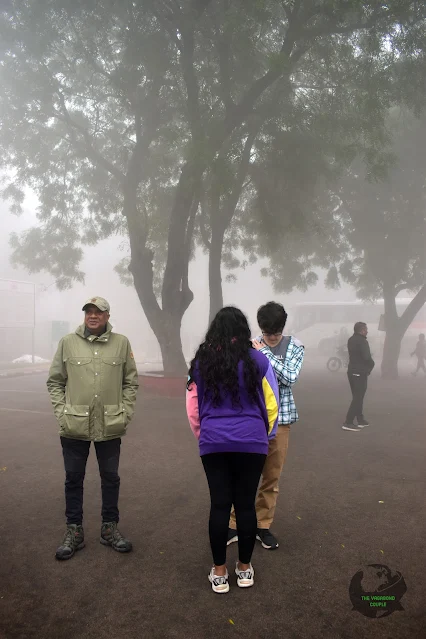 |
| Taj Mahal parking: Electric golf cart and electric rickshaw pick up point |
We can't see anything other than the headlights of the golf cart following us on our way to the east gate.
 |
| Electric golf cart: Taj Mahal parking lot to entrance gate shuttle |
While the common sight of monkeys scampering around the Taj Mahal might seem charming at first, it's important to be aware of the potential risks and challenges they pose to visitors. The monkeys at the Taj Mahal are mostly long-tailed macaques. Estimates suggest there are around 25,000 of these monkeys living in Agra. However, there are far fewer monkeys deep in the winter than we had seen in our prior visits in summers.
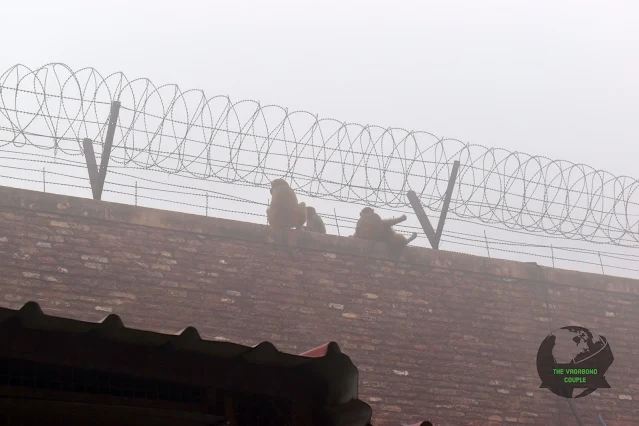 |
| Monkeys towards eastern gate of Taj Mahal |
We head to the Fatehabad Gate (East Gate) from the Booking Counter to be greeted by an impressive cutout of India's Prime Minister Narendra Modi promoting a recent successful landing of a spacecraft on the moon.
 |
| A cutout of India's Prime Minister Narendra Modi at entrance to the Taj Mahal |
We clear the Eastern Gate security checkpoint and walk towards the forecourt (Jilaukhana). The Jilaukhana is a large, square courtyard situated directly in front of the Taj Mahal. It's flanked by two identical three-storey buildings, each with arcaded verandas and cusped arches.
 |
| Taj Mahal: East Gate to Forecourt |
These buildings once housed over 128 individual rooms called hujras which served as shops and stalls during the Taj Mahal's early years. Imagine the bustling marketplace that would have greeted visitors centuries ago!
 |
| Taj Mahal: Walking from East Gate (Fatehabad Gate) towards Forecourt (Jilaukhana) |
Here are some of the key features of the Jilaukhana:
- Two grand bazaars: Leading to the Jilaukhana from the east and west gates are two covered bazaar streets, lined with the aforementioned hujra rooms. These bazaars offered a vibrant atmosphere and catered to the needs of visitors and pilgrims for centuries.
- Central pool: In the center of the courtyard lies a rectangular pool, reflecting the sky and adding to the sense of symmetry and order.
- Khawasspuras: On the northeastern side of the Jilaukhana are two residential enclosures called Khawasspuras. These were originally used to house the eunuchs and attendants who served the Mughal court.
- Saheli Burj: To the east and west of the Jilaukhana stand two smaller tomb complexes known as the Saheli Burj. These are believed to be the tombs of two of Shah Jahan's lesser wives.
Although the shops in the Jilaukhana are no longer operational, the space now hosts various cultural events and exhibits, offering a glimpse into the rich history and architecture of the Taj Mahal complex.
We make a right into the main gateway (also known as the Darwaza-i-Rauza - "gate of the mausoleum" and Darwaza-i-Khana - "gate of the house") to the Taj Mahal complex. Soaring 93 feet high and 150 feet wide, the gateway to the Taj Mahal is a two-story masterpiece built of red sandstone, reflecting the grandeur of the Taj Mahal itself. Built between 1632 and 1638, it's attributed to the architect of the Taj Mahal, Ustad Ahmad Lahauri.
The gateway features a pointed central niche with an ogival arch, showcasing Persian and Timurid influences. Flanking the arch are double-story arcades, adding depth and elegance. The gateway is adorned with intricate elements like:
- Arabic calligraphy: Verses from the Quran, inlaid in black stone, adorn the arch, offering blessings and prayers. The calligraphy on the arch uses varying letter sizes to maintain visual consistency from top to bottom, creating a stunning optical illusion.
- Geometric patterns: Delicate geometric patterns on the red sandstone walls add visual interest and complexity.
- Hindu motifs: Lotus flowers, leaves, and vines inlaid with semi-precious stones in white marble hint at the Hindu influence in Mughal architecture.
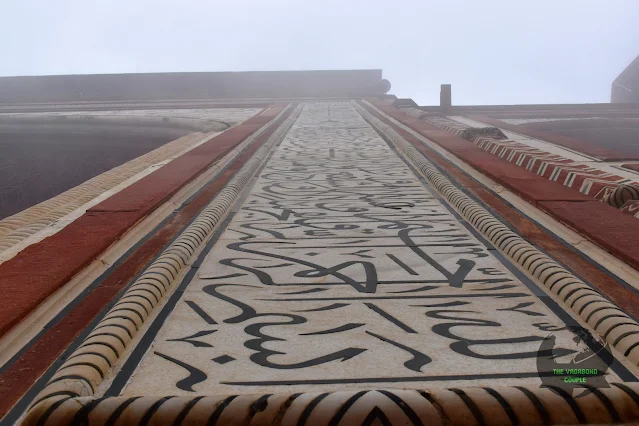 |
| Arabic calligraphy at main gateway of Taj Mahal |
 |
| Pattern on a window |
Stepping through the Main Gateway feels like entering a sanctuary, leaving the outer world behind and immersing oneself in the serene beauty of the Taj Mahal complex. The architectural fusion of Persian, Timurid, and Hindu influences showcases the cultural diversity and inclusivity of the Mughal era.
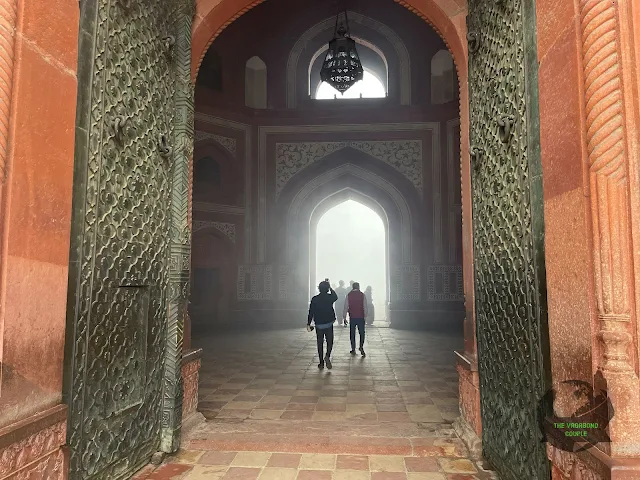 |
| Main Gateway of Taj Mahal |
We walk across the Chaar Bagh ("four gardens", also referred to as "Mughal Gardens") towards the Taj Mahal. The Chaar Bagh is a sprawling garden complex that forms the backdrop to the Taj Mahal and is one of the most iconic gardens in the world.
The Chaar Bagh is laid out in a traditional Persian style, with four quadrants separated by a central water channel. The garden is planted with a variety of trees, flowers, and shrubs and is home to a number of fountains and pavilions.
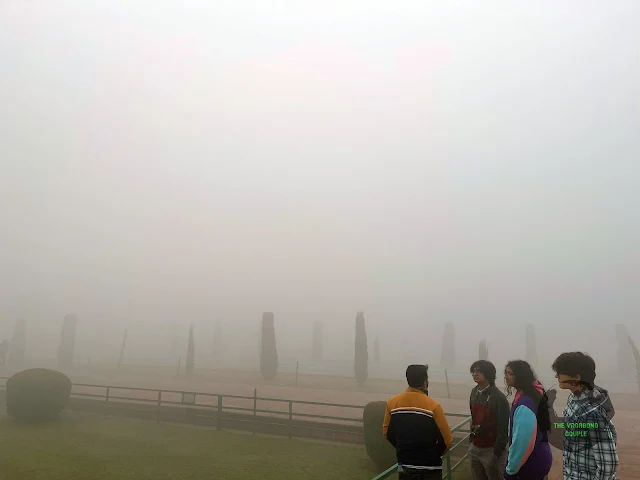 |
| Chaar Bagh / Mughal Gardens |
Approximately 17 acres in size, the Chaar Bagh was built in the early 17th century during the reign of Mughal emperor Shah Jahan. It took over 20 years to complete. The garden is irrigated by a system of canals that draw water from the Yamuna river.
The Chaar Bagh is believed to represent the Garden of Paradise as described in the Quran. It is a beautiful and serene space, and it offers a peaceful respite from the hustle and bustle of the city. It is also a popular spot for weddings and other celebrations. Here are some of the key features of the Chaar Bagh:
- Layout: The garden is laid out in a traditional Persian style, with four quadrants separated by a central water channel. This layout is believed to represent the four rivers of Paradise mentioned in the Quran.
- Plants: The garden is planted with a variety of trees, flowers, and shrubs, including cypress trees, roses, and marigolds. The trees provide shade and shelter, while the flowers add color and fragrance.
- Water features: The garden is home to a number of fountains and pavilions, which add to the sense of tranquility and beauty.
Crossing the Chaar Bagh gardens, we embark on the standard tourist route of the Taj Mahal:
 |
| Tourist Movement Plan for Taj Mahal Complex |
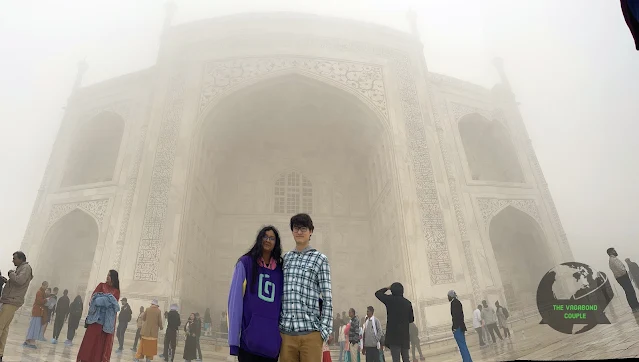 |
| Taj Mahal |
We did purchase the option to visit the replica cenotaphs of the real tombs. The Taj Mahal holds an intriguing secret beneath its breathtaking beauty: a hidden chamber containing the actual tombs of Emperor Shah Jahan and his beloved wife Mumtaz Mahal. Above this chamber, in the main floor's octagonal hall, lies a replica cenotaph for each, meticulously mirroring the intricate details of the real tombs below.
The real tombs, crafted from polished black stone inlaid with semi-precious gems, are inaccessible to tourists and simpler in design compared to the cenotaphs above. Islamic tradition dictates burying bodies below ground, hence their placement in the lower chamber.
The Replica cenotaphs on raised platforms are adorned with intricate pietra dura inlay work using precious and semi-precious stones. These dazzling cenotaphs are exact replicas of the real tombs below in terms of dimensions and ornamentation. Their elevated position ensures visitors wouldn't walk over the actual resting places of Shah Jahan and Mumtaz Mahal. Accessing the lower chamber for everyday visitors wouldn't be feasible. The replica cenotaphs above provide a readily accessible alternative for prayers and viewing.
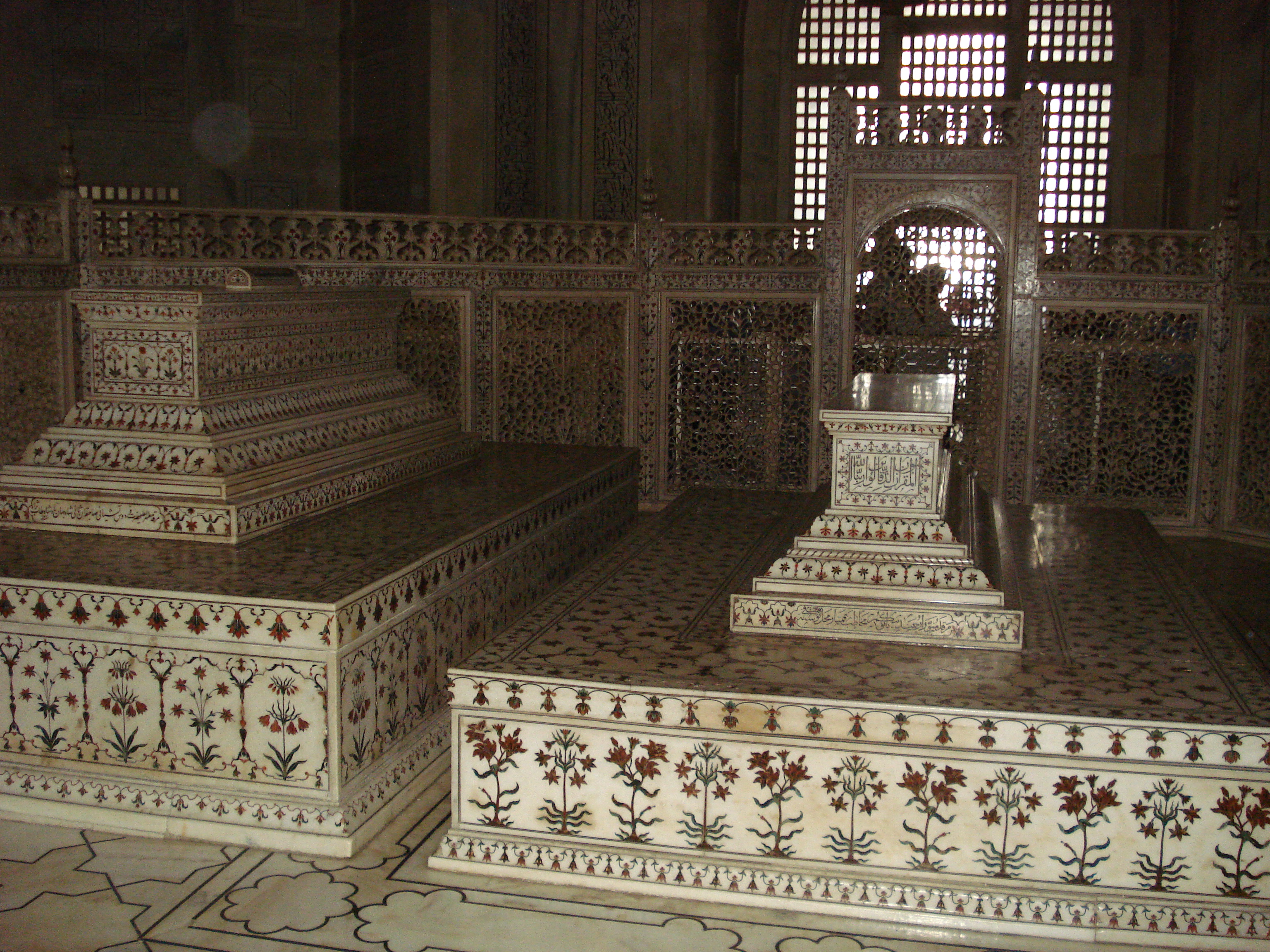 |
| The false sarcophagi of Mumtaz Mahal (right) and Shah Jahan (left) in the main chamber By Maahmaah - Own work, Public Domain, Link |
The elevated cenotaphs symbolize the souls of Shah Jahan and Mumtaz Mahal ascending to Paradise, while their earthly remains rest peacefully below. Positioned in the center of the octagonal hall, they also become a focal point enhancing the symmetry and grandeur of the interior space.
The Taj Mahal's hidden chamber and replica cenotaphs add another layer of fascinating complexity to this iconic monument.
The four minarets of the Taj Mahal are a defining feature of its iconic silhouette. These graceful towers, each standing over 40 meters (130 feet) tall, rise majestically from the corners of the mausoleum's plinth.
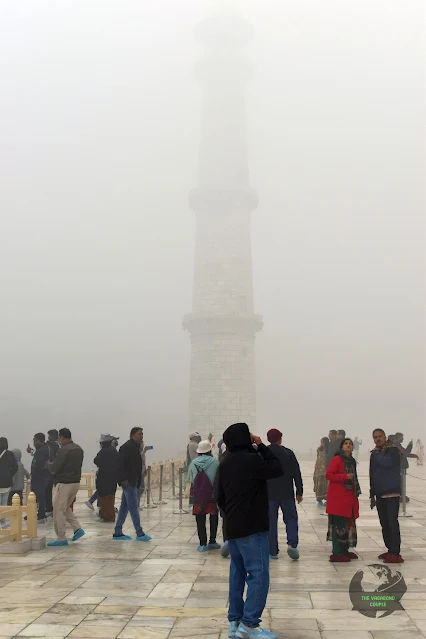 |
| One of the four minarets of Taj Mahal |
In Islamic architecture, minarets traditionally serve as towers from which the call to prayer (adhan) is made. While the Taj Mahal is not primarily a mosque, the inclusion of minarets reflects the emperor's deep religious faith and adds a touch of spiritual grandeur to the mausoleum. Interesting facts about the minarets of Taj Mahal:
- Architectural Harmony: The minarets are not mere decorative elements; they play a crucial role in the overall architectural composition of the Taj Mahal. Their perfect symmetry mirrors the tomb's central dome and iwans, creating a sense of balance and proportion.
- Slanted Construction: Interestingly, the minarets are not built completely upright. They have a slight outward tilt, a deliberate architectural feature designed to ensure that if they ever collapse due to an earthquake or other catastrophe, they would fall away from the main structure, protecting the delicate marble tomb.
- Detailed Design: Each minaret features three balconies that break up the vertical flow and add visual interest. The balconies are adorned with intricate geometric patterns and calligraphic inscriptions, echoing the decorative motifs found throughout the Taj Mahal.
 |
| One of the four minarets of Taj Mahal |
More than just architectural elements, the minarets of the Taj Mahal are powerful symbols of faith, artistic ingenuity, and enduring love.
As we exit the Taj Mahal, we get a view of the gardens from the mausoleum's plinth.
 |
| View of Chaar Bagh from Taj Mahal Mausoleum's Plinth |
We exit the majestic Taj Mahal via its forecourt (Jiluakhana).
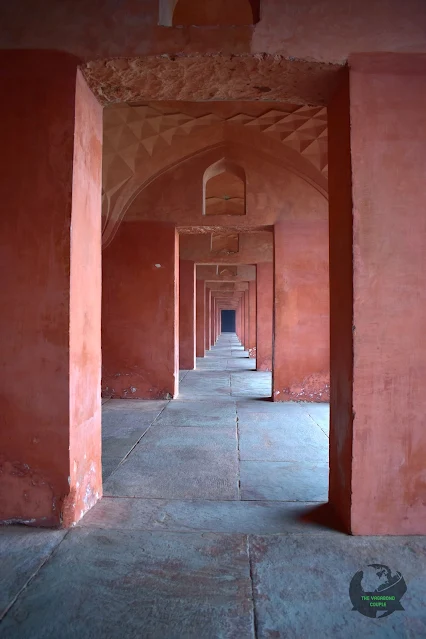 |
| Corridors of the Forecourt (Jiluakhana / Chawk-i-Jilaukhana) |
We get back to our hotel via a marble artisan's shop and bid adieu to Agra. Our next stop will be in the land of the Maharajas of India: Jodhpur, Rajasthan.
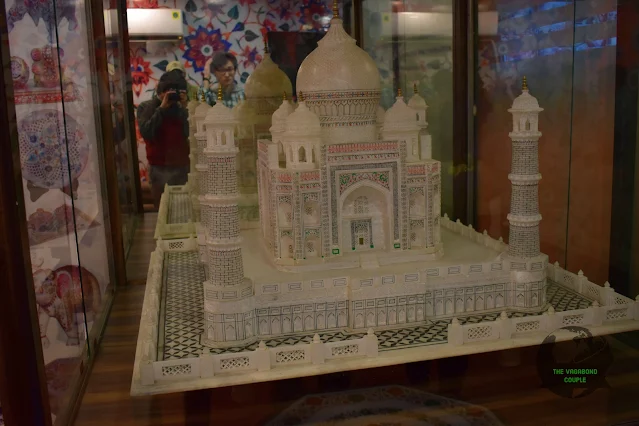 |
| Marble replica of Taj Mahal at an artisan's shop |
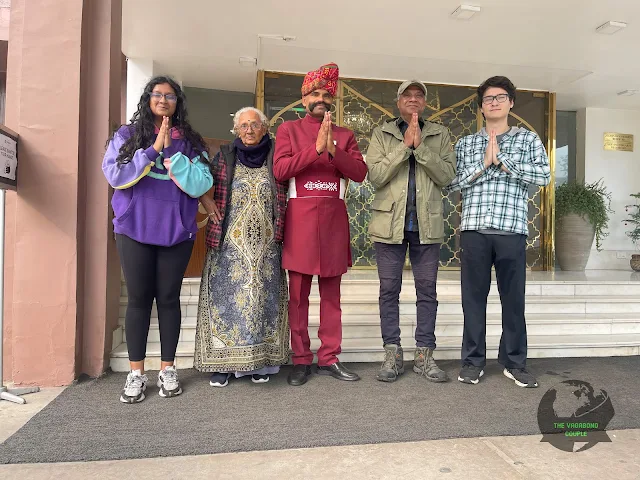 |
| Bye Agra, till we meet again |
Note: Prose in this post received AI assistance from ChatGPT and Bard.



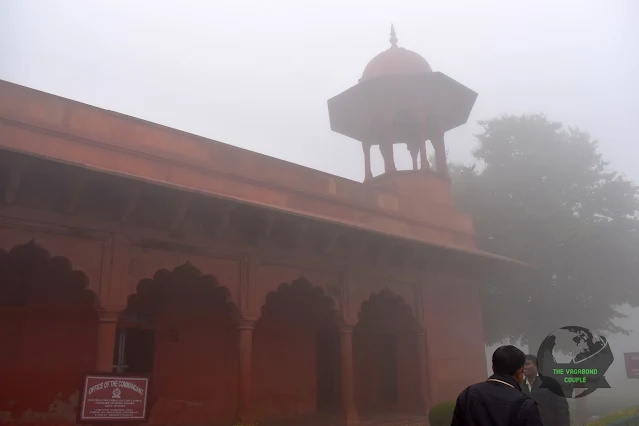
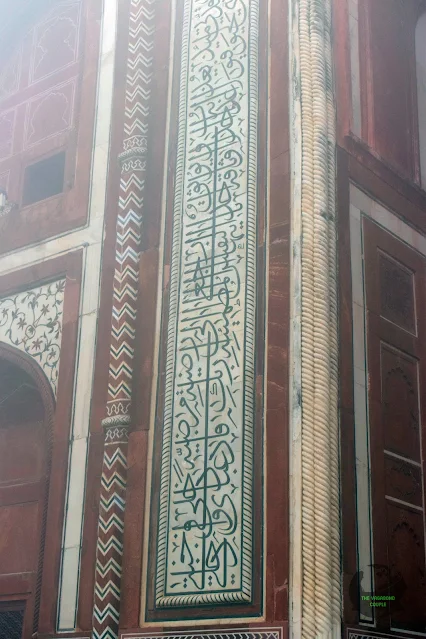

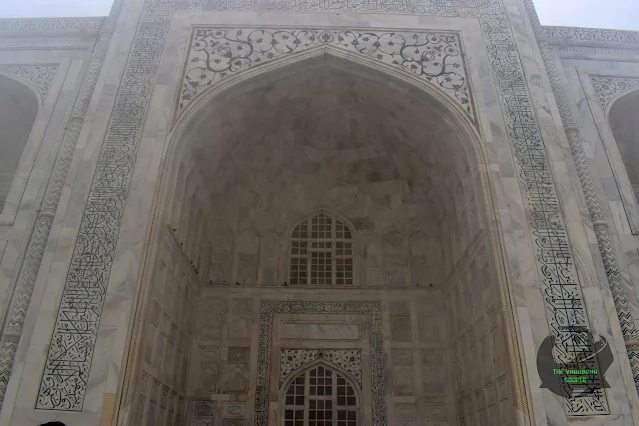

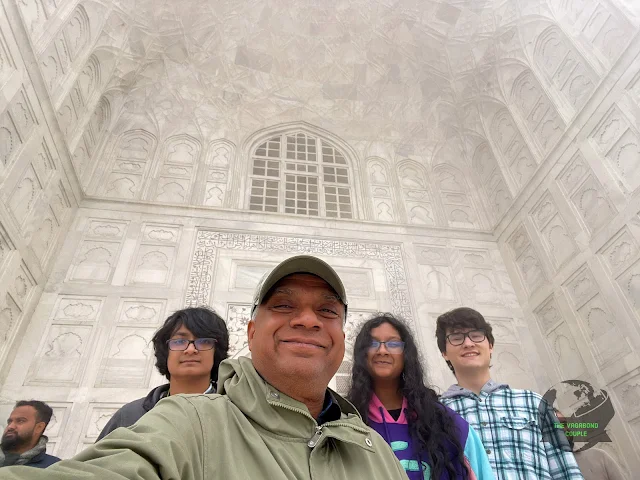



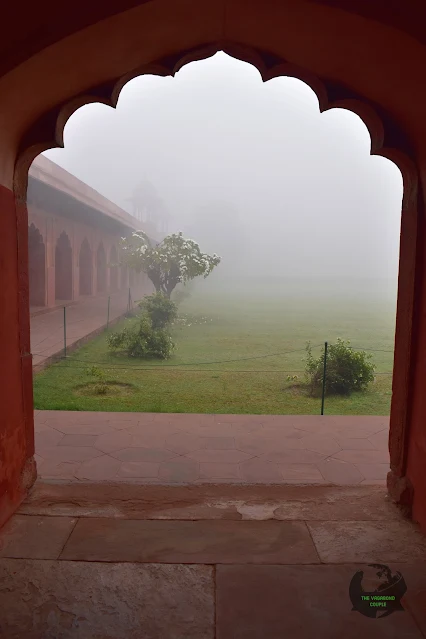


0 comments